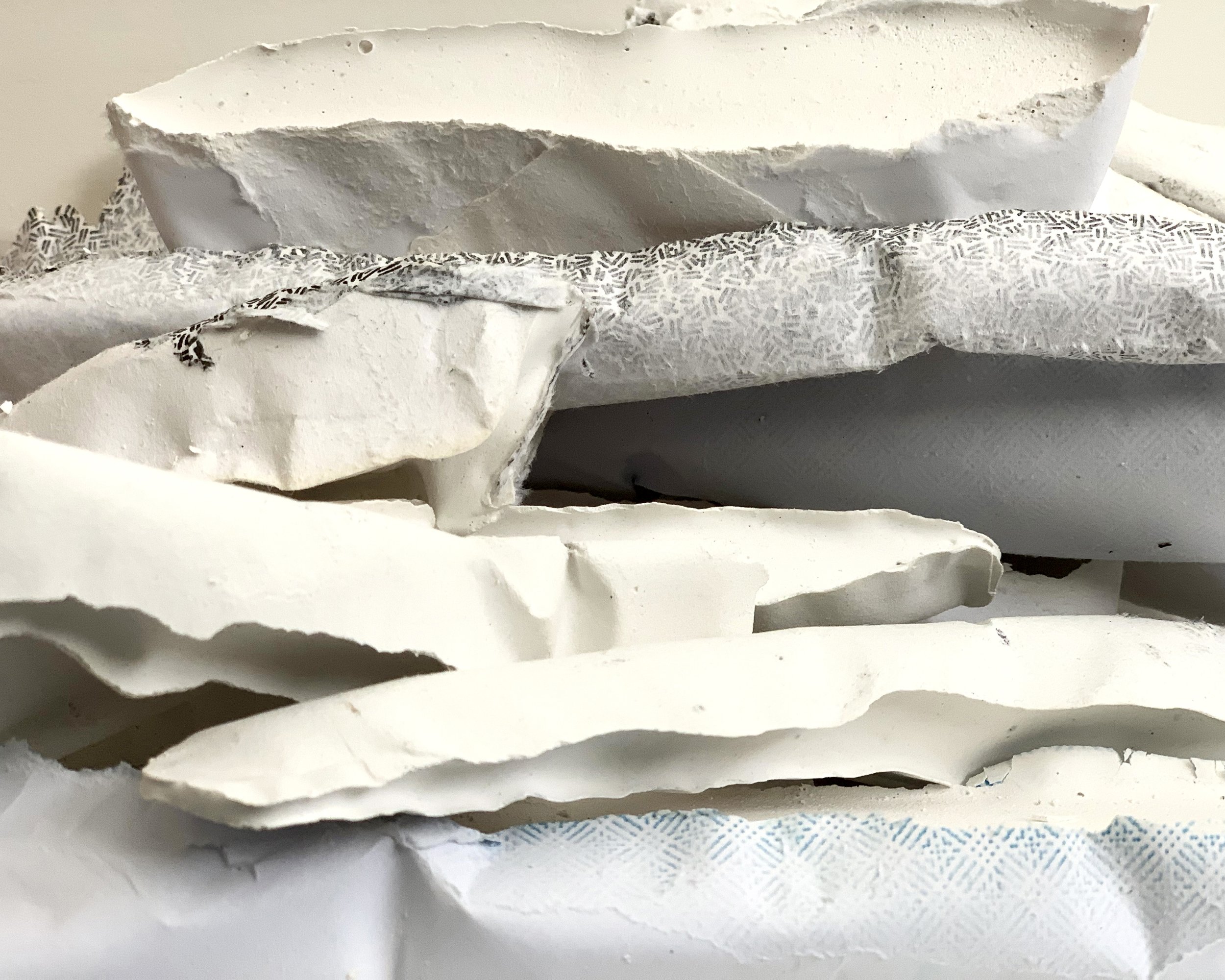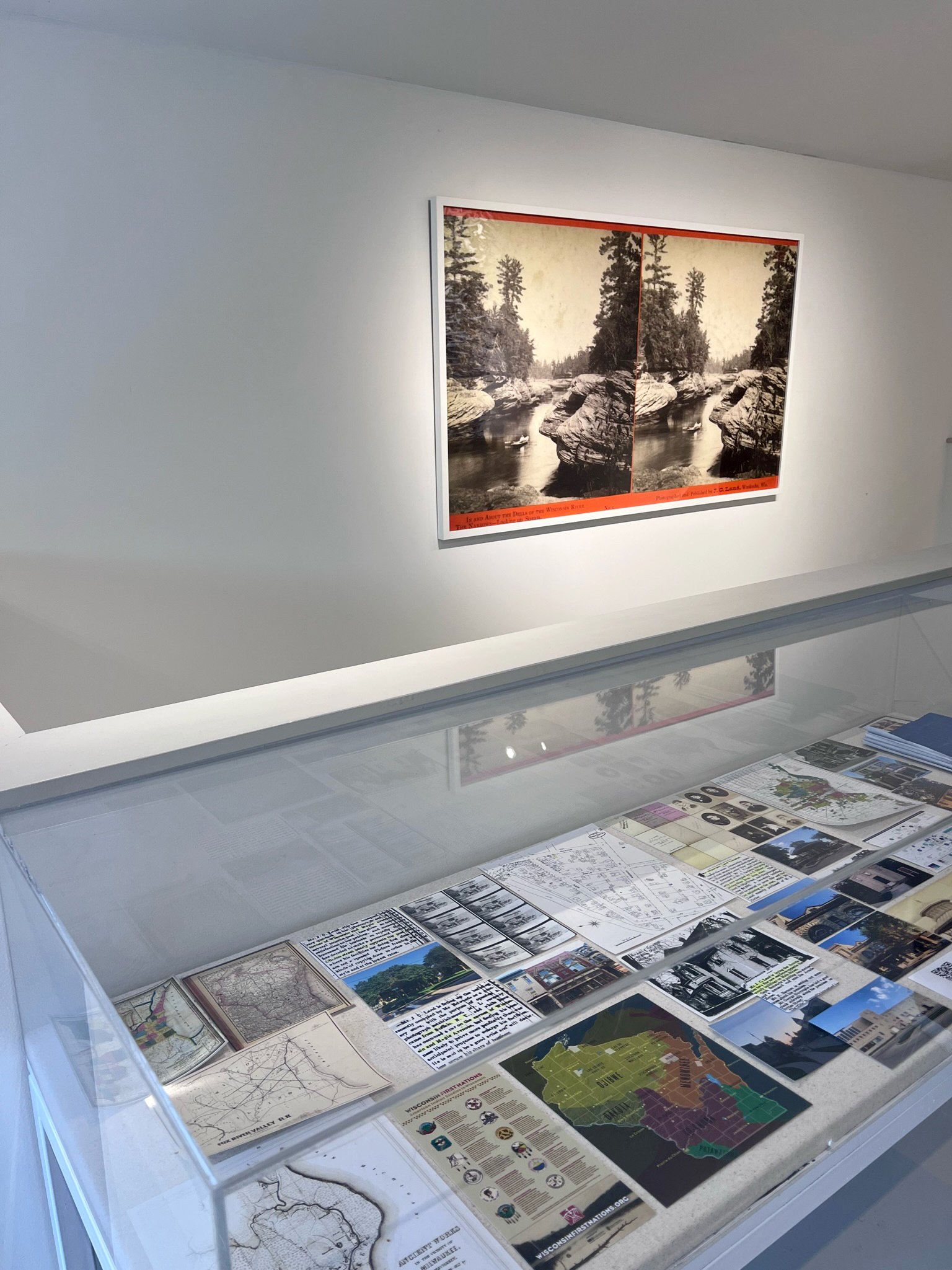Negatives Preserved
DVAA, Delaware Valley Arts Alliance
April 2 - May 8, 2022
37 Main St, Narrowsburg, New York
In Negatives Preserved, Stephanie Land (b.1978) follows America’s story of segregation through her family’s history of land, alongside the creation of America’s suburbs, and her own birth and upbringing in Midwestern sundown towns in Wisconsin and Illinois. The use of photography, mapping, sculpture and the archive, allows Land to swing between the micro and macro, and ask how one white family’s home ownership affects Black and brown families in a country whose laws and policies continue to be inherently racist.
The point of departure begins with the archival photographs of her great-great-grandfather, JC Land, who was born in Grand Island, New York, in the mid 1800’s and moved to Waukesha, Wisconsin in the 1870’s. Stephanie traveled to Waukesha in 2021, to learn more about her first generation German-American ancestor and to unpack how a traveling portrait photographer, within the first few years of his arrival, managed to secure a brick and mortar photo studio along with three other buildings, including a large house on Main Street. Through the experience of walking while documenting with photography and video, Stephanie retraced the steps of her great-great-grandfather, visiting site specific locations in Waukesha while uncovering his archive in the Waukesha County Museum Research Center. In the video titled Suburban Sprawl, Stephanie utilizes framing and sound to create a nearly invisible environment of choreographed exclusion. On an infinite loop, questions are repeatedly mapped unanswered.
In the opening piece The Dawes Act, we see a stereograph of a scene from nature, a photographic style popular at the time, but without much context of the surrounding environment. Beneath the flowing rivers the viewer is unaware that from the 1880s, and at the tail end of Reconstruction, towns throughout Wisconsin explicitly barred Black and brown families from integrating white communities. We also don’t see the backlash of the abolition of slavery, the formerly enslaved or the forced displacement to Oklahoma and the West, of the many Indigenous populations, including Kiikaapoi (Kickapoo), Peoria, Bodwéwadmi (Potawatomi), Očhéthi Šakówiŋ (Sioux), Hoocąk (Ho-Chunk) and Myaamia (Miami). What is not said in the stereograph contains more history than ever was told and, within a brief moment overlooking the Wisconsin river, it asks the viewer to consider this, as a vital component of how we observe land.
Upon return from Waukesha, Stephanie began to investigate the policies that likely benefited her family throughout the past 150 years: from the Homestead Act to the Dawes Act, from the GI Bill after WWII to redlining and suburban sprawl. In the sculpture Homesteads, 1878-1998, Stephanie uses textiles to create a generational archive of owned family homes. The structure alludes to the domestic, a white picket fence or fabric invoking a laundry line; both tools that signal home while defining the outline of one's property. With the familial archive side by side her own photography, Stephanie attempts to understand how history determines who continues to have access to land.
The show’s central statue, White Flight, employs alginate cast in envelopes, to engage the intimate violence of white silence and the things that remain unspoken about. The castings, though seemingly contained, thrust out like shards to show the violence that came with white communities. Considered an unearthing, White Flight speaks to the stories that weren’t told across generations, the histories of entire populations, unrecognized.
Investigating beginnings and middles instead of endings, Negatives Preserved is an examination into land and the histories untold, its privileges informing the narratives we have. The show asks for white Americans to view American histories from a more truthful lens, confronting the ways one participates in and upholds white supremacy.
10% of any artwork sold from Negatives Preserved will be redistributed to Northeast Farmers of Color Land Trust.
White Flight, 2022, Alginate, brass rods, paint, envelope remains, 132 x 48 x 12 inches
Sundown Town, 2021, Archival Digital Print, 52 x 31 Inches
Homesteads, 1878-1998, 2022, Wood, paint, photographs on fabric, hydrocal, envelope remains
Borders, 2022, Vitrine case with digital photographs, blueprints, maps, 30 x 60 x 41. To find out more about the items in the case, click the photograph above.
The Dawes Act, 2022, Archival Pigment Print, 42 x 71 inches























